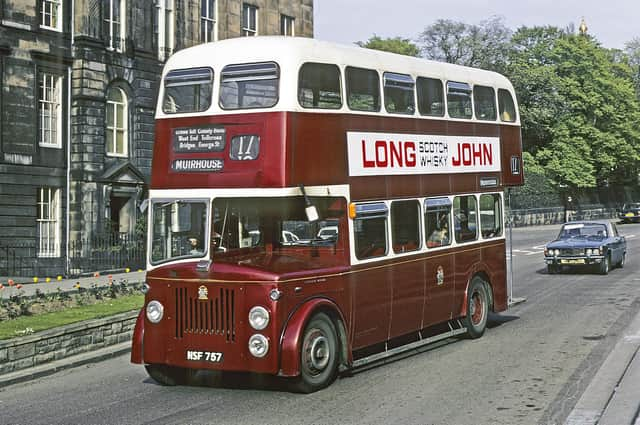Ding! Ding! 'Hold very tight now!' The day I ditched a vintage Edinburgh bus - Liam Rudden


Grandad went on to have a great life on the buses when the original trams were discontinued in 1956. Then, all the Corporation buses had two things in common, open back platforms enabling passengers to hop on and off between stops, and a uniformed conductor or conductress, colloquially, a clippy.
I grew up fascinated by those early double-deckers having heard tales of grandad's adventures driving them from my old man. Growing up in the late-Sixties and early-Seventies, it was the utilitarian Leyland Titan PD2/20s that ruled the Capital’s bus routes at a time when car ownership was not yet a universal thing. Brought in as tram replacement vehicles, they were the workhorses that criss-crossed the city, the 'ding ding' of their bells as familiar then as the clanging chimes of the modern trams today.
Advertisement
Hide AdAdvertisement
Hide AdNot the most aesthetically pleasing of beasts – one Councillor described them as ‘ungainly, inelegant, monstrous masses of shivering tin’ – these people-movers nevertheless won the hearts of the generations brought up with them. Despite the fact that, unless you were a smoker, you daren’t venture upstairs into the ever present fug for fear your clothes would smell of Woodbines for the rest of the day, there still never fails to be a flurry of interest when the few of those vehicles that have been preserved are spotted out on the road today.
Knowing my interest in these buses, my old man introduced me to one of his workmates who had bought NSF757, one of the withdrawn Titans, intent on restoring it to its original glory – it cost him £500, the tyres, an extra £1,500. It was a dream come true for the 15-year-old me who quickly threw himself into helping with the restoration while jumping at every opportunity to tag along when it was taken for a spin.
I found a photo of 757 heading towards Dean Bridge in its glory days recently, (pictured, used with permission of Geoffrey Marshall/The Transport Library). It reminded me it was a beast to drive, as I discovered when given the opportunity to get behind the wheel on a raised test-track at Straiton. With the hope I might be climbing into a cab where grandad once worked his shift I reached behind to hit the big red starter button. The old bus shuddered into life and slowly trundled forward, once I’d got it into gear, but then the first bend neared... that was when I understood a 15-year-old didn’t have the upper body strength to turn the steering wheel and haul the mass of metal around a corner - there was no power steering when these things were made. As a result, I ditched it over the side of the track.
That’s when I remembered stories of drivers on routes that took them up the Mound earning a bonus when driving these buses, compensation for ‘busman's stomach’, which I assume was due to the strain of pulling them up the incline and around the bends of the Mound.
Advertisement
Hide AdAdvertisement
Hide AdMust admit, didn’t feel so bad about ditching 757 after that.
A message from the Editor:
Thank you for reading this article. We're more reliant on your support than ever as the shift in consumer habits brought about by coronavirus impacts our advertisers.
If you haven't already, please consider supporting our trusted, fact-checked journalism by taking out a digital subscription
Comment Guidelines
National World encourages reader discussion on our stories. User feedback, insights and back-and-forth exchanges add a rich layer of context to reporting. Please review our Community Guidelines before commenting.